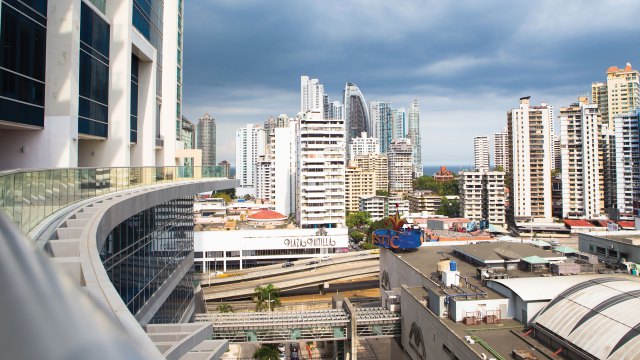In a great article that appeared in Variety Magazine, Anna Marie de la Fuente writes about how “Rebates, Stages and a solid financial base have turned this once-sleepy community into a production powerhouse”.
A new film hub has suddenly emerged in Central America. Just as its skyline has morphed dramatically in the space of a few years, Panama, sometimes known as the Dubai of the West, has upped the ante on production, offering a 15% cash rebate to foreign shoots and a studio complex and media center set to break ground by late 2014.
All the construction workers toiling on the skyscrapers in Panama City could easily learn to put up film sets, says location manager Sam Tedesco, who has partnered with producer Jonathan Sanger (“Vanilla Sky”) and attorney Michael Moore to build the tentatively dubbed Panama Media Center. Initial plans include four soundstages and office spaces on 20 to 30 acres of land. Tapping both local and international investors, the upcoming facility will cost between $25 million and $50 million to build, according to Sanger, who grew up in Panama.
“Panama is the real hub for Latin America,” Sanger claims. “It has a world-class international airport, no currency exchange issue and stability.” The objective, he adds is to train locals in all aspects of filmmaking.
The media center will include conference rooms, training centers and screening rooms. Mentors will be invited to conduct workshops and seminars. “We intend to work very closely with the local film community,” says Tedesco, who is in talks with Panamanian helmer Abner Benaim (“Chance”) to form part of the facility’s management team.
The new tax incentives and a wealth of locations that provide varied urban and tropical settings within an hour’s drive give Panama an edge. Aside from having the U.S. dollar as its currency, wages are low, and banking and cash-flow transactions are fluid. The latter is due to the presence of most major international banks, lured by the Panama Canal, which demands cash advances of up to $500,000 from the ships that sail through it.
Two major Latin American equipment rental companies, Congo Films of Colombia and EFD, Mexico, have already set up shop in Panama. Both serviced Venezuelan helmer Jonathan Jakubowicz’s boxing biopic “Hands of Stone,” starring Edgar Ramirez and Robert De Niro, who play legendary Panamanian boxer Roberto Duran and his trainer Ray Arcel, respectively.
“There’s definitely no other place (I know) where skyscrapers are five minutes away from the rain forest and the beach,” Jakubowicz says.
Local production has also risen dramatically with some eight features, both fiction and nonfiction, skedded to shoot in 2014, compared to an annual average of one until as recently as last year, per Panama Film Commission topper Arianne Benedetti.
International production in Panama is also on the rise. Panama’s earnings from foreign shoots ranged from $2 million to $3 million annually between 2000 and 2012, with the exception of 2007 when “Quantum of Solace” spent $12 million in the country. “Investment climbed to $23 million last year” when the new film law kicked in, Benedetti says. Big-ticket productions in 2013 were led by “Hands of Stone,” French Pablo Escobar pic, “Paradise Lost,” 3D Imax docu “The Panama Canal” and TNT skein “The Hero.”
Sanger is mulling over the possibility of producing at least two projects in Panama later this year, historical drama “Man for the Defense” and action thriller “Breathe.” Tedesco took Mark Wahlberg’s actioner “Contraband” to the country two years ago. “We would have shot more scenes there but the tax incentive didn’t exist then,” he says.
Meanwhile, the third Panama Film Fest, running April 3-9 this year, seeks to grow in prominence as it debuts Latin American co-production market Meets during the fest. Benedetti will serve as director of Meets, which will bestow a $25,000 cash prize on the winner of a competition among a pre-selected crop of five Panamanian and seven Latin American fiction features in the final stages of development.
